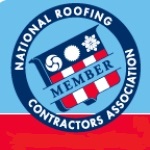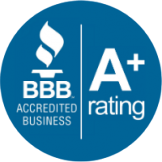East Meadow Roofing: Article About Selecting Fiberglass Shingles For Your Home
Asphalt is the sticky black material fiberglass shingles are coated in. For roofs, asphalt is typically mixed with small pieces of gravel, giving composite roofs their characteristic rough feel. Asphalt helps to waterproof the roof, provide protection and insulation against wind and heat and prevents resin within the fiberglass mat portion of the shingle from leeching out.
Question and answer courtesy of East Meadow roofing experts: When should I avoid choosing fiberglass shingles for my roofing project?Fiberglass shingles typically require more maintenance than other types of roofing, and don't tend to last as long. If you have money to spare, you might consider other types of roofing materials, like metal and slate roofing. Additionally, if you don't plan on devoting a lot of maintenance to the roof, such as for a spare garage or building you'll visit irregularly, going with a different material may be a better option. In general, reserve composite roofing for low cost projects.

Composite roofing is as universal in the United States as basketball and pizza. In residential neighborhoods across the country, you'll see dozens of varieties of composite roofs. With their characteristic rough appearance, low cost and easy installation process, the fiberglass shingles making up composite roofs are a favorite of roofing contractors everywhere. What you may not know about composite roofs, though, is that the shingles come in several different styles. Styles are designed not just for aesthetic appearance, but also for particular functional properties. If you're considering a roofing remodel, talk to your contractor about the different composite fiberglass shingles available for your home.
You might first be drawn to the shape of certain fiberglass shingles. While most home use flat rectangular shingles, there are other option available. East Meadow roofing styles often include triangular or square shapes. Another option people often consider is a T-lock shingle design. These shingles give your home a "puzzle" like appearance, helping it to stand out from other homes in the neighborhood. Other shingles have rounded ends, providing a quaint country charm.
Another consideration is shingle color. Shingles tend to come in shades of brown, black, and white. In warmer regions, it's advisable to go with lighter colored shingles. The reason for this is that light colored shingles better reflect heat, allowing your home to stay cooler during the summer.
Have a question regarding Velux skylights or Supreme skylights? Please ask a roofing professional from Long Island Roofing of East Meadow.
This equates to greater energy savings, allowing you to keep your wallet a little thicker. For people living in colder climates, conversely, darker colors are a better bet. These colors absorb more thermal energy and, coupled with good attic insulation, will help to keep your home warmer.
In addition to energy saving costs, some shingles have special weatherization properties. In windier areas, it's common to see shingles that are rated for wind resistance. This helps to prevent shingles from flying off your roof. Others have thicker layers of components like asphalt or laminated coatings. Both improve the durability of your fiberglass shingles against heat and weather damage. In areas with high rainfall, it's a good idea to pick ones that can resist algae and moss growth, which helps to reduce the amount of roof cleaning necessary to keep your property value up.
Additionally, others have higher ratings against UV radiation and thicker layers of asphalt. This not only promotes durability and lifespan, but when there are imperfections in the roof under-decking, the extra asphalt helps to smooth out the appearance of the roof. Consider this factor when considering your composite roofing options.









